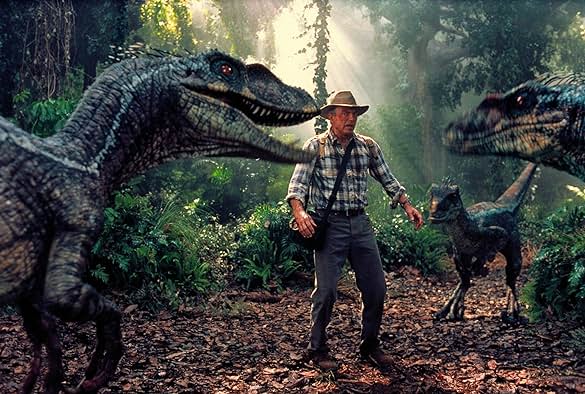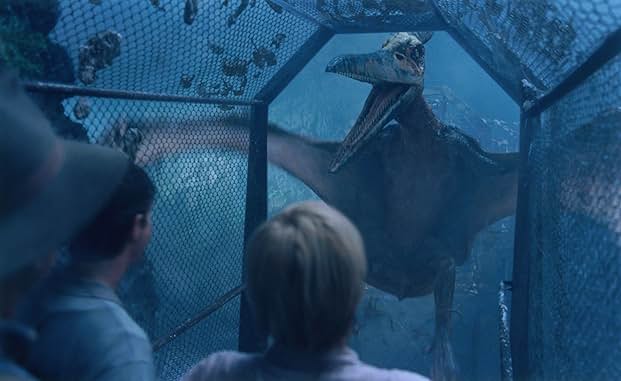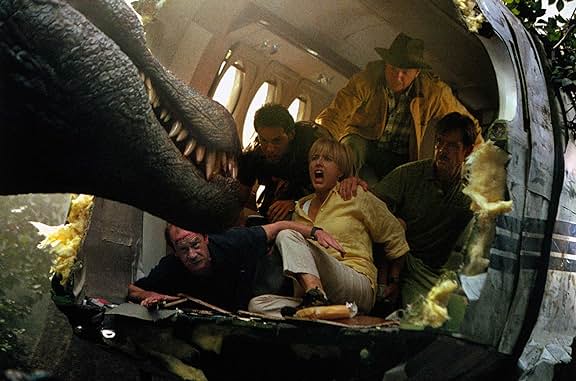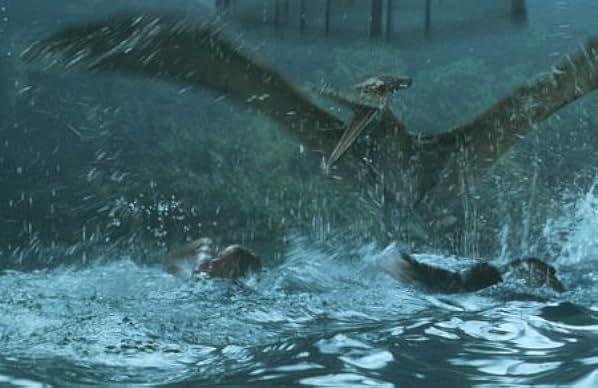Jurassic Park III ( 2001 )

“Jurassic Park III” is a 2001 science fiction adventure film directed by Joe Johnston, marking the third installment in the Jurassic Park franchise. Unlike its predecessors, “Jurassic Park III” is not based on a Michael Crichton novel, but instead features an original story written by Peter Buchman, Alexander Payne, and Jim Taylor. The film stars Sam Neill, William H. Macy, Téa Leoni, Alessandro Nivola, Trevor Morgan, and Michael Jeter.
The film begins with a young boy, Eric Kirby (Trevor Morgan), and his family friend Ben Hildebrand (Mark Harelik) parasailing near Isla Sorna, the secondary island where dinosaurs roam freely. An accident leads to Eric and Ben being stranded on the island, setting the stage for the central plot.

Dr. Alan Grant (Sam Neill), the renowned paleontologist from the first film, is struggling to fund his research. He is approached by Paul Kirby (William H. Macy) and his ex-wife Amanda (Téa Leoni), who claim to be wealthy adventurers offering a substantial donation to Grant’s research in exchange for his guidance on an aerial tour of Isla Sorna. Reluctantly, Grant agrees, unaware of the true nature of their plan.
Upon arriving on Isla Sorna, Grant realizes the Kirbys’ real intention: they are searching for their son Eric, who has been missing on the island for eight weeks. Their plane crash-lands after an encounter with a Spinosaurus, a new and formidable dinosaur species, leaving the group stranded.

The group, consisting of Grant, the Kirbys, Grant’s protégé Billy Brennan (Alessandro Nivola), and several mercenaries, soon finds themselves in a fight for survival. They face numerous dangers, including the Spinosaurus, Velociraptors, and the general hazards of the island’s untamed wilderness.
As they navigate the island, they discover the remains of Ben Hildebrand and signs that Eric might still be alive. The group is further endangered when Billy, in an ill-advised attempt to secure funding for their research, steals Velociraptor eggs, which attracts the aggressive attention of the Raptors.

The film’s tension escalates with a series of harrowing encounters, showcasing the team’s resourcefulness and resilience. They find Eric, who has been surviving using his ingenuity and knowledge of dinosaurs. Reunited with his parents, the group must still escape the island, which proves to be a daunting challenge.
In the climax, the survivors manage to make contact with the U.S. Navy and Marine Corps, thanks to a satellite phone recovered from the wreckage. A rescue team arrives just in time to save them from the pursuing Raptors and Spinosaurus. The film concludes with the group being evacuated from the island, leaving the dinosaurs behind once again.

“Jurassic Park III” was a commercial success, grossing $368 million worldwide. However, it received mixed reviews from critics. The film was praised for its action sequences and special effects, particularly the introduction of the Spinosaurus as a new antagonist, but it was criticized for its thin plot and lack of character development compared to the previous films.
Despite the mixed reception, “Jurassic Park III” remains a significant part of the franchise, contributing to the ongoing exploration of themes such as the unpredictability of nature, the consequences of genetic engineering, and human survival in the face of prehistoric dangers. The film’s legacy continues to influence the broader narrative of the Jurassic Park series, which was revitalized with the “Jurassic World” films in the following decade.